The trigger
Okay, so, I’ve got the barrel screwed on, I’ve got the ADL bolt modified to fit the new barrel and have verified that everything fits and functions as it should. That factory ADL trigger sure felt like crap though… I figured I could probably adjust it to a satisfactory level. But, I’ve found that the newer Remington triggers are not as easy to work with as those from long ago. So, before even messing with that trigger I looked in one of my junk boxes where I thought I had a couple of older 700 triggers. I get to digging stuff out of the box and heck, there’s a Rifle Basix trigger in there that I don’t remember how it got there. It looks brand new. I swapped it into the ADL, took just a minute to adjust it and the rifle now has a crisp 14 oz. trigger pull. I actually prefer a lighter trigger than that for a heavy colony varmint rig, but, it’s certainly not bad and a hundred times better than the as issued factory trigger.
The stock
What it needs next, is a stock… I looked through my pile of odds and ends for one. A couple that could “work”, but not really up to snuff for handling such a long, heavy barrel. A heavy varmint taper barrel, 28” long, with only a .20 caliber hole through it, is a long heavy sucker. This rifle is going to be for shooting off of sand bags at rock chucks, not toting around. I thought it really ought to have a stock with a wide flat fore end and I don’t have one of those just laying around. Didn’t want to rob one off of another rifle, either.
So… The search was on to find a deal on a used stock for The Mongrel. Luckily, this took only a couple of days. My buddy Fred found a used but minty looking McMillan from off of a Rem. Custom Shop 40XB KS for me online for a very fair price.
The stock arrived with composite pillars already installed and a nice looking bedding job that had previously been done. I had been thinking I’d just do a quick glass bed on it and come back and drop pillars in as a winter project. But, it already has pillars installed. Cool!
The 40X stock was an especially fortunate find, in that the 40X is a single shot so the stock isn’t inletted for BDL bottom metal. Meaning, the ADL trigger guard fits this stock and I didn’t need to buy any bottom metal. There was, the small issue of the stock being for a solid bottom, single shot action, with no inletting for a magazine (this makes for an even more rigid stock). But of course the ADL does have a magazine cut out. But, a trip to the trusty junk boxes on the shelf found an old Davidson single shot adapter ramp. I simply siliconed the Davidson ramp into the ADL magazine cut out and that solved that. Now The Mongrel will be a smooth feeding single shot. I actually prefer single shot actions for colony varmint shooting so this is all good!
And all things considered, I couldn’t have asked for a better fit in the barrel channel either. The Hart HV barrel fits just about perfect. Nice even (and not too small) gap all the way down on both sides. No work to do there either. And just looking at the barreled action with no stock, I had thought the flutes on the barrel had clocked pretty well. But looking at it all put together, the flutes are clocked just dang near perfect. Nice!
Since the existing bedding job looked pretty good and the barrel channel didn’t need any work, I decided to skip the bedding job for right now. Just put it together and see how it shoots.
None of the screws fit
So, I screwed the barreled action into the stock, slid the bolt home, and noticed my first problem… You can see it in these two pictures.
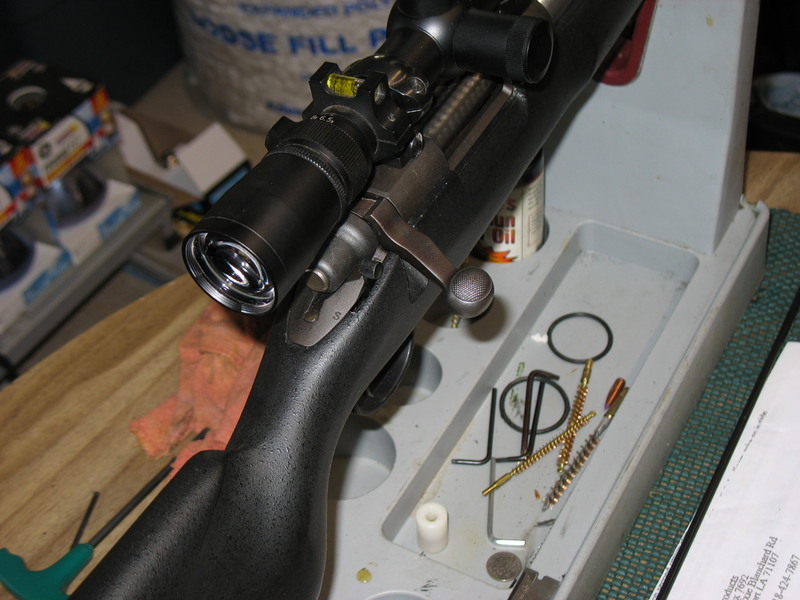
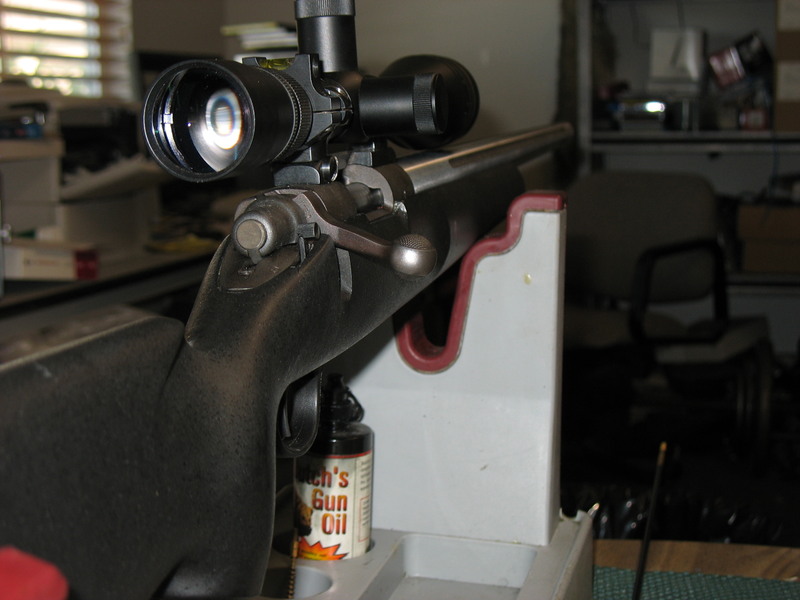
That bolt isn’t closed all the way. It’s turned down far enough that the bolt is cocked and it fires. But it’s not turned down and locked up all the way.
The reason – the front action screw is too long for the stock – it’s protruding up through the bottom of the receiver so that the bottom bolt lug is hitting it and stopping where you see it above. I don’t think anyone would have missed this. But, the rifle would fire, if you wanted to, like this. And that could be very dangerous. Just one more small example that you really need to be paying attention when putting together a rifle from odds and ends like this.
Quick, easy fix though. Less than a minute on the bench grinder and the bolt was not too long anymore. Worth noting here, I had noticed a faint line scribed on that bottom bolt lug when I was taking the ADL apart earlier. I suspect that front bolt was just a hair too long even as it left the factory. It wasn’t long enough to prevent full lock up and be dangerous as it came from the factory, but it would have been bad ju-ju for accuracy.
When chasing accuracy gremlins, stock and scope mount screws that are a bit too long are part of the checklist. If you suspect you have a similar condition on one of your rifles, the easiest way to check for contact between the bottom bolt lug and the front action screw (besides a tell tale mark on the bolt lug), is to simply remove the firing pin from the bolt. No tool is needed to remove the firing pin, but having a proper tool makes it much easier to do. On non J-lock 700’s, I use the tool pictured below.
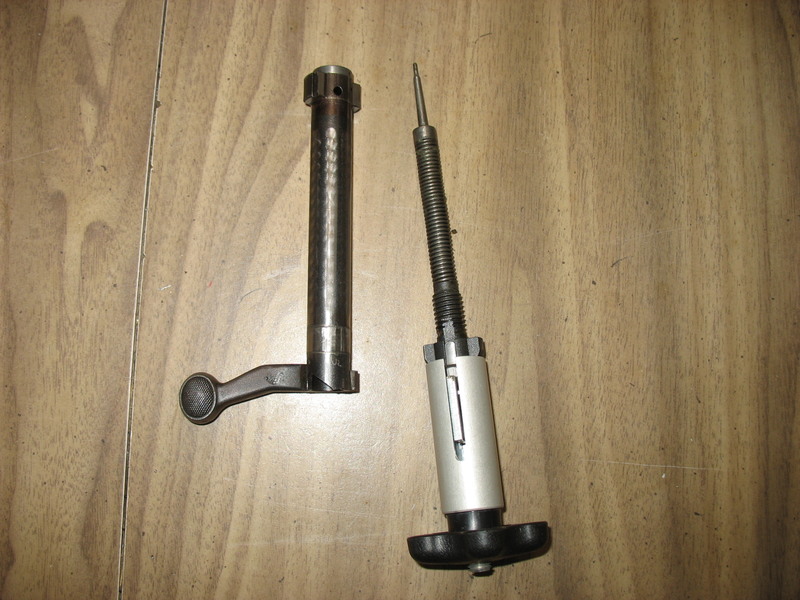
With the firing pin removed, the bolt should literally just fall closed under it’s own weight. And without the resistance of cocking the firing pin spring, you can feel any touching of the bolt lug and action screw that might exist.
So, anyway, front action screw shortened. Next thing I noticed, is that the rear action screw is a tad too long as well. It was just barely sticking up far enough to contact the cocking piece on the back of the bolt when fully cycled. It didn’t effect function and wasn’t dangerous, but it was annoying. You can see the cocking piece in the picture below, it’s the notched piece sticking out from the bottom of the bolt.
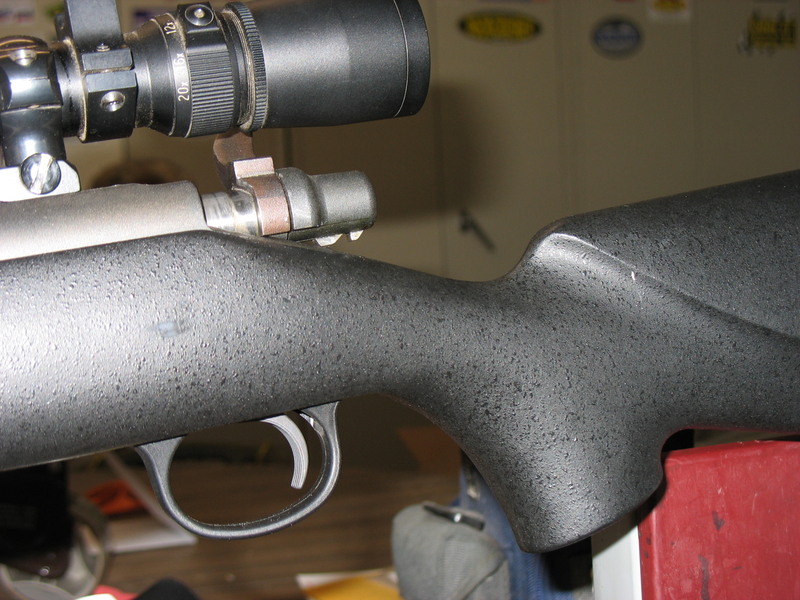
And in this picture, you can see the tip of the rear action screw, shiny from contact with the bench grinder.
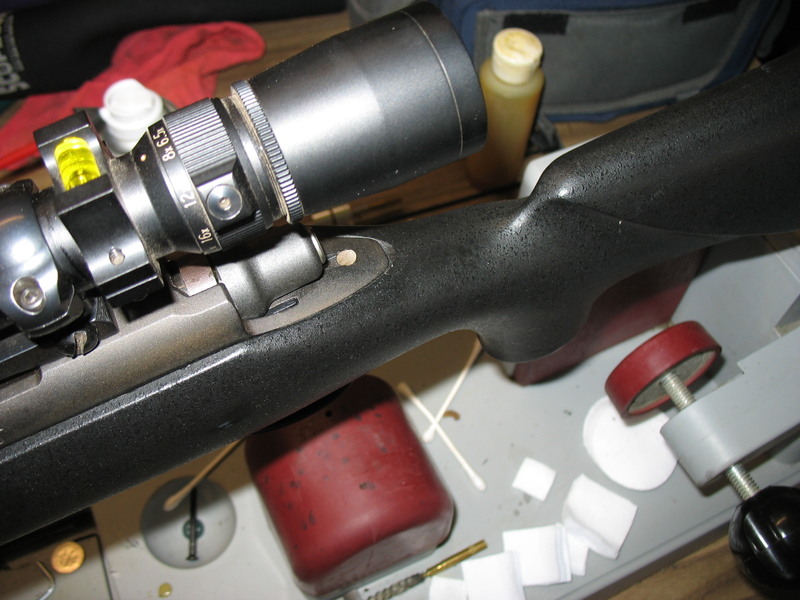
With both the front and rear screws being too long, it came as a bit of a surprise to find that the middle screw was too short! It doesn’t quite reach far enough to engage the threads. I just left it out and am not worried about it. When I get around to bedding this stock I’ll blank off the hole and use a different screw that won’t engage the action. That’s my standard procedure for ADL’s anyway. That middle screw being torqued into the action can do nothing positive for accuracy. It has potential to introduce stress into the bedding and adversely effect accuracy if over tightened. And it does nothing to keep the action clamped into the stock anyway (unless it’s tight enough to effect accuracy…). The only purpose it really serves is to help secure the trigger guard. Not anything to worry about in this application.
So now that I have the screws all sorted, I can check to see how good the existing bedding job in the stock fits with this ADL action bolted in to it.
How to check a bedding job
The way I like to check a bedding job for stress is to support the rifle by clamping the muzzle end of the barrel in a vise. Then setup a dial indicator between the barrel and the forend so that the indicator will show any movement between the two. Then, alternately tighten and loosen each of the action screws and see how much the indicator moves. Ideally, it won’t move at all. For my purposes, a flicker of the dial, a thousandth or two is acceptable, any more than that and the bedding job gets redone though. Below is a picture of a different rifle setup for this kind of bedding check.
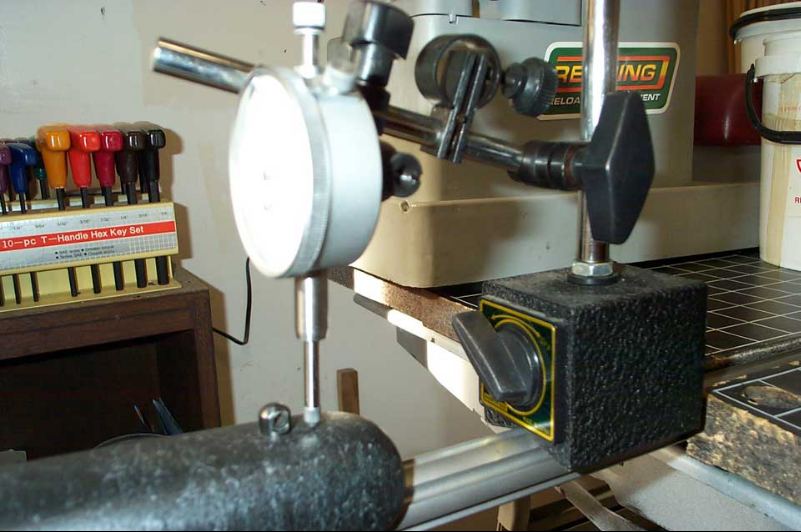
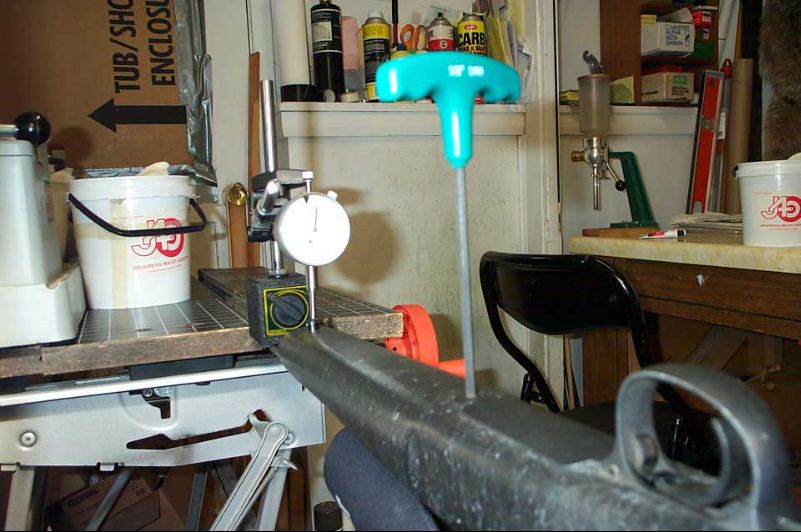
The new to me McMillan 40X stock on the Dasher shows about .004 movement of the indicator dial. That’s definitely more than I like. Not really terrible, most factory rifles show way more, but definitely a bit more stress in that bedding than I like to see. So, for sure, I’ll be re-bedding this stock eventually. Just going to wait and see how it shoots for now and if it shoots good enough, I’ll wait for winter to do the bedding job. If I don’t like the way it shoots though, that bedding job is going to happen sooner rather than later…
The Scope
While waiting for the stock to arrive, I played musical chairs with scopes on rifles, took a spare 4.5×14 off the shelf and put it on a .22BR, which freed up a Leupold 6.5-20×40 with target turrets to go on The Mongrel. I found a base and set of rings in one of the junk boxes. Once I had the action screw issues sorted, I finalized the scope mounting.
So here she is, ready to shoot!
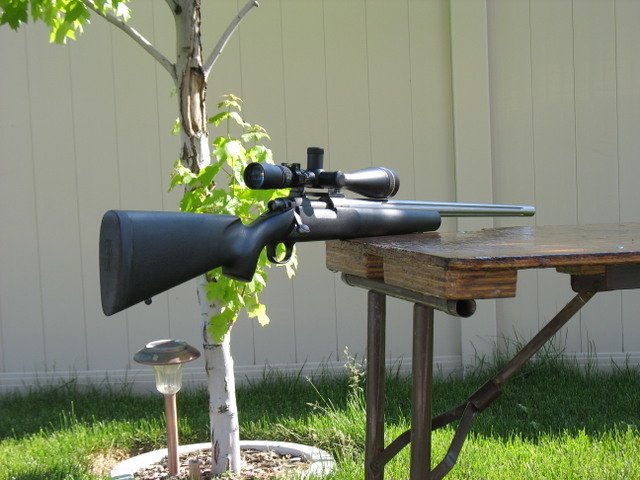
In part 4 I’ll wrap this up with some load work and field testing on rock chucks.
More to come…




Dave, you are an excellent teacher! Great job!
Thanks Keith. Means a lot coming from you!
– Dave
Man you’re putting out some great stuff. I really like the paper target you were using in this article, where can I get it?
Ric, I downloaded that from a forum (NPHA) that went under years ago. Can’t remember the last time I heard even a peep about that site.
Hello again. Thanks for responding. I’m not sure what NPHA is? Do you still have the file you downloaded? It’d be awesome if you could email it, or you could add it to your links page.
That 20 Dasher is a sweet piece of work. Are you still enjoying it, or have you moved on to something new?
Ric, I think I still have the file, but it’s not mine to put out there for download. If I can find it I’ll email it to you though.
Oh, and I still bust out the Dasher now and then. Thinking about it for next weekend. Only thing against it, is it’s not threaded for a suppresser and I’ve gotten to where I really like shooting with a can!
I got your email. Thanks so much!!!
Yes, I’ve heard the suppressors can spoil you quite a bit.
Ya know it’s so ridiculous that you HAVE TO wear a seat belt to drive a car or a helmet on a motorcycle because it’s a protection device, yet rifles are not REQUIRED to have suppressors as a hearing protection device. Not only for the shooter, but for those close by. Such a mixed up government we have.
Thanks again for the email.
Amen!